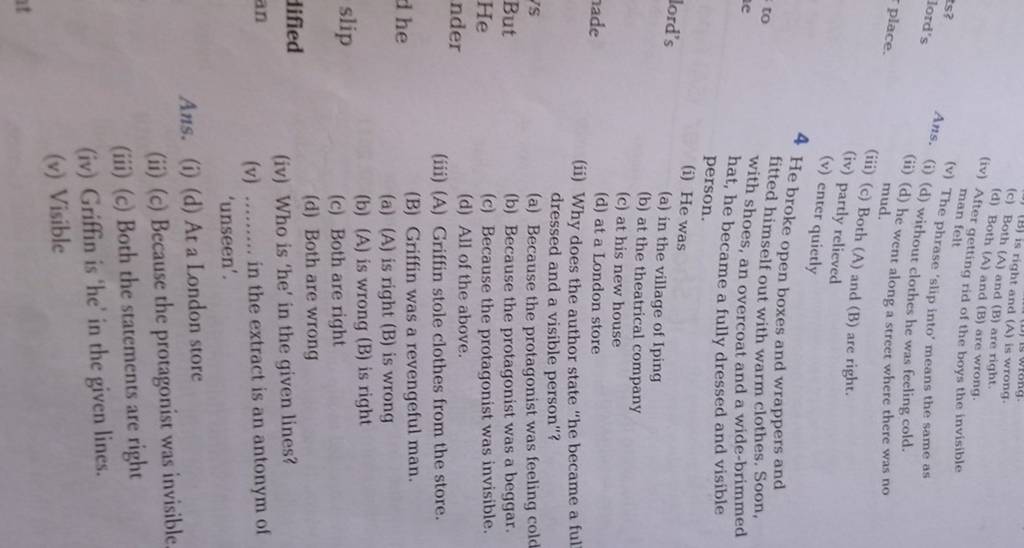Question
Question asked by Filo student

Why does the author state "he became a ful dressed and a visible person"?
- Because the protagonist was feeling cold
- Because the protagonist was a beggar.
- Because the protagonist was invisible.
- All of the above.
Found 2 tutors discussing this question
Discuss this question LIVE
5 mins ago
Filo tutor solution
Learn from their 1-to-1 discussion with Filo tutors.

Generate FREE solution for this question from our expert tutors in next 60 seconds
Don't let anything interrupt your homework or exam prep with world’s only instant-tutoring, available 24x7
Practice more questions on Biology
Question 1
Views: 5,466
(i) Gonorrhoea
(ii) Syphilis
(iii) AIDS
Question 2
Views: 5,579
(a) testis
(b) oviduct
(c) seminal vesicle
(d) prostrate gland
Question 4
Views: 5,654
(a) What is organ A?
(b) What are (i) B, (ii) C and (iii) D?
(c) Name the organ E.
(d) While walking barefoot, if we happen to step on a sharp piece of stone, we immediately lift our foot up. Which of the two organs: A or E, is directly involved in this action?
(e) If we step out from a darkened room into bright sunshine, we close our eyes for a moment. Which of the two organs, A or E, is directly involved in this action?
Students who ask this question also asked
Question 1
Views: 5,671
Question 3
Views: 5,261
Question 4
Views: 5,474
| Question Text | Why does the author state "he became a ful dressed and a visible person"? |
| Topic | Biology |
| Subject | Science |
| Class | Class 10 |



